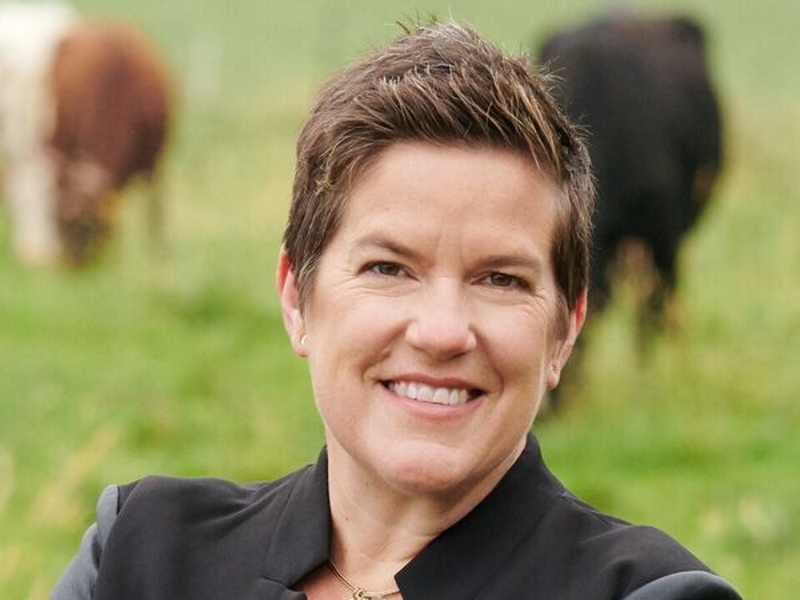Can Missy Hughes Help Businesses Recover?
WEDC director still hasn’t been approved by Senate, but has vital role in state’s economy.
The job sounded intriguing, so she took it, even though she was a political neophyte. She’s been on the job less than eight months, but she’s still on the Capitol’s version of probation, since she hasn’t been confirmed by the state Senate.
Now, she heads a state agency that by June 30 must come up with a plan to “support” seven industries that anchor the state’s $305-billion economy — tourism, manufacturing, agriculture, forest products, construction, retail, and services — crippled by the killer Covid-19 virus.
Missy Hughes, CEO of the Wisconsin Economic Development Corp., is starring in Wisconsin’s version of a new Mission:Impossible film. One year ago, she was a top executive at a large agricultural cooperative, Organic Valley.
Gov. Tony Evers relies on another on-probation official, Department of Health Services Secretary Andrea Palm, who has held the job since January 2019 without being approved by the Senate, and health-care experts to lead on Covid-19 public safety issues. Evers expects an economic recovery game plan from Hughes.
In a WisconsinEye interview, Hughes said she isn’t afraid of failing. “I don’t live in fear.”
But, she added, she would fail if she can’t bring everyone – elected officials, business leaders statewide and locally, and public health experts – together to agree on ways to help businesses, including their employees and customers, reopen safely.
Hughes said she has asked Evers for $100 million, out of about $1.9 billion in federal aid the governor controls, to help Wisconsin businesses claw back from the health emergency, for a program that could be called “Restart 72.”
Restart 72 would provide grants to help businesses reorganize in late summer and fall – after they have burned through federal aid from the Paycheck Protection Program (PPP) and Small Business Administration loans, Hughes said.
That $100 million in state aid would be a “spark” or a “bit of a push to help them get rolling again” in the fall, Hughes said.
“Three months from now, we’re going to have a whole new set of challenges,” Hughes said in the WisconsinEye interview.
“We find ourselves at a great moment of tension and balance,” Hughes told the Assembly State Government Committee last week.
Republican legislators are pushing the region-by-region reopening plan of Wisconsin Manufacturers & Commerce (WMC) that would assign a “risk profile” to businesses in each of seven regions of the state.
Four of those regions “have more hospitals than Covid patients,” WMC executive Scott Manley told legislators. Wisconsin’s unemployment rate is 19 percent, and 450,000 out-of-work residents have filed for jobless benefits, Manley added.
Hughes said she and two other cabinet secretaries spent hours going over WMC’s plan with that group’s leaders.
But the governor’s Safe at Home order – not scheduled to end until May 26 – is justified, given the unknowns posed by a virus that killed 339 Wisconsin residents, and sickened another 7,964, in only six weeks, Hughes added.
“Our job is to get ready – to prepare our businesses, employees and customers by sharing knowledge we have gained about best practices for dealing with a virus that has no vaccine and is highly contagious,” Hughes told lawmakers.
“When the doors open, employees and customers will expect to be safe – and our businesses must live up to those expectations. There is no business that wants someone getting sick on their watch.”
The industries WEDC must come up with a plan to help by June 30 anchor Wisconsin’s economy.
The state Department of Agriculture, Trade and Consumer Protection estimated agriculture is a $104.8-billion part of that economy with 435,700 employees.
“I came into this job to help farmers,” said Hughes, who lives in Vernon County.
Tourism was a $21.6 billion industry in 2018 that supported 52,300 jobs, state officials estimate. And, according to Stats America, Wisconsin’s construction industry supported 185,100 jobs in 2019; manufacturing, 494,400 jobs, and retail trade, 377,500 jobs.
Legislators praised Hughes.
It’s hard not to like someone who said she had just cut her 20-year-old son’s hair with a dog grooming clipper, since Safer at Home closed barber shops and styling salons.
Steven Walters is a senior producer for the nonprofit public affairs channel WisconsinEye. Contact him at stevenscotwalters@gmail.com
If you think stories like this are important, become a member of Urban Milwaukee and help support real, independent journalism. Plus you get some cool added benefits.
More about the Coronavirus Pandemic
- Governors Tony Evers, JB Pritzker, Tim Walz, and Gretchen Whitmer Issue a Joint Statement Concerning Reports that Donald Trump Gave Russian Dictator Putin American COVID-19 Supplies - Gov. Tony Evers - Oct 11th, 2024
- MHD Release: Milwaukee Health Department Launches COVID-19 Wastewater Testing Dashboard - City of Milwaukee Health Department - Jan 23rd, 2024
- Milwaukee County Announces New Policies Related to COVID-19 Pandemic - David Crowley - May 9th, 2023
- DHS Details End of Emergency COVID-19 Response - Wisconsin Department of Health Services - Apr 26th, 2023
- Milwaukee Health Department Announces Upcoming Changes to COVID-19 Services - City of Milwaukee Health Department - Mar 17th, 2023
- Fitzgerald Applauds Passage of COVID-19 Origin Act - U.S. Rep. Scott Fitzgerald - Mar 10th, 2023
- DHS Expands Free COVID-19 Testing Program - Wisconsin Department of Health Services - Feb 10th, 2023
- MKE County: COVID-19 Hospitalizations Rising - Graham Kilmer - Jan 16th, 2023
- Not Enough Getting Bivalent Booster Shots, State Health Officials Warn - Gaby Vinick - Dec 26th, 2022
- Nearly All Wisconsinites Age 6 Months and Older Now Eligible for Updated COVID-19 Vaccine - Wisconsin Department of Health Services - Dec 15th, 2022
Read more about Coronavirus Pandemic here
The State of Politics
-
RNC Brings Fame to Gen Z Party Leader
 Jul 15th, 2024 by Steven Walters
Jul 15th, 2024 by Steven Walters
-
Wisconsin’s Republican Roots Run Deep
 Jul 8th, 2024 by Steven Walters
Jul 8th, 2024 by Steven Walters
-
Feuding Supreme Court Justices Need a Break
 Jul 1st, 2024 by Steven Walters
Jul 1st, 2024 by Steven Walters






















